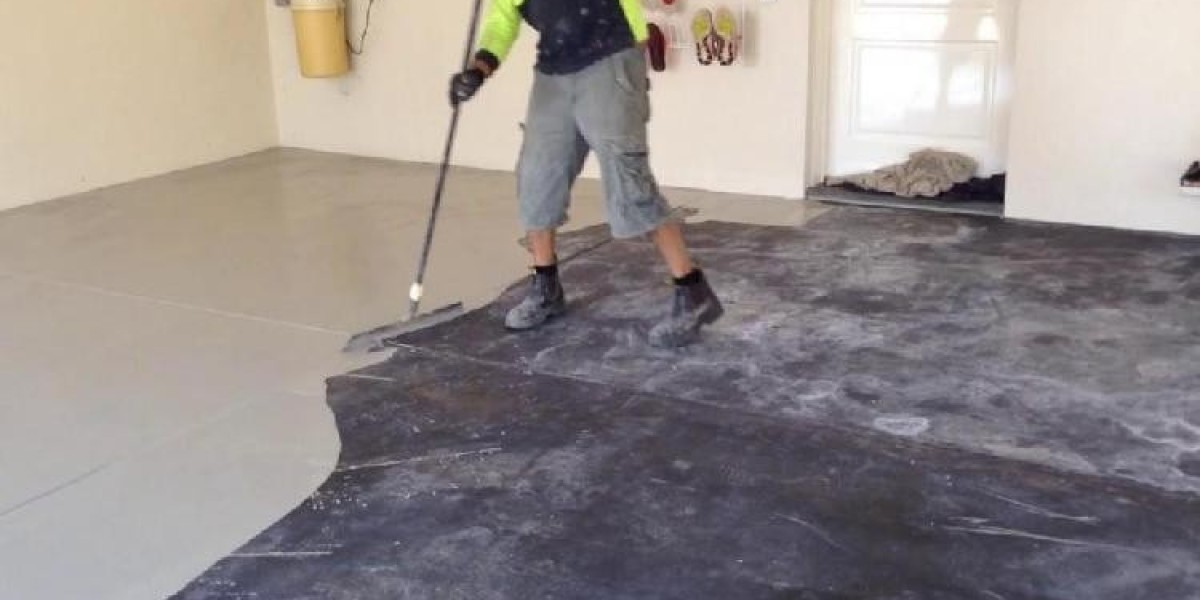In modern construction and renovation projects, achieving a smooth and durable surface is often a top priority. One material that has revolutionized the way professionals approach flooring is self-leveling concrete. This innovative solution offers an efficient way to create level surfaces with minimal effort and superior results. Whether you’re resurfacing a damaged floor or preparing a base for a new covering, self-leveling concrete delivers high performance, durability, and ease of use.
Self-leveling concrete is a cement-based compound designed to spread across uneven surfaces and form a perfectly flat, smooth finish. Unlike traditional concrete, which needs to be manually spread and leveled, this material automatically flows into place with minimal assistance. Once poured, it settles evenly, creating a flat surface that can support various types of flooring, including tile, hardwood, vinyl, and carpet.
The compound is typically made from a blend of polymer-modified cement, fine aggregates, and other additives that enhance its flowability and bonding properties. The result is a high-performance material that can quickly cover large areas while ensuring a consistent and level surface.
Why Use Self-Leveling Concrete?
Self-leveling concrete offers several benefits that make it an ideal choice for construction and renovation projects:
1. Easy Application
One of the key advantages of Self Leveling Concrete is its ease of application. Traditional methods of leveling floors can be labor-intensive and time-consuming, requiring significant skill and manual effort to achieve an even surface. With self-leveling concrete, the process is simplified. After mixing the compound with water, it can be poured directly onto the floor. The material flows effortlessly, filling in dips, cracks, and imperfections as it levels itself out.
2. Fast Drying Time
In addition to being easy to apply, self-leveling concrete also dries quickly. Depending on the specific formulation used, it can typically be ready for foot traffic in a matter of hours and fully cured within a day or two. This quick drying time makes it an attractive option for projects with tight deadlines, reducing downtime and allowing contractors to move on to the next phase faster.
3. Versatility
Self-leveling concrete is extremely versatile and can be used in a wide variety of applications. It is commonly used as a subfloor material, providing a smooth base for installing various types of floor coverings. It’s also ideal for resurfacing existing floors, covering up worn or damaged areas and restoring them to a fresh, smooth finish.
Additionally, self-leveling concrete can be used on a range of substrates, including concrete, plywood, and tile. This flexibility makes it a great choice for both residential and commercial projects.
4. Durability
Once cured, self-leveling concrete forms a highly durable surface that can withstand heavy foot traffic, furniture, and even industrial machinery. The material is resistant to cracking, chipping, and wear, ensuring that the floor remains in good condition for many years. Its long-lasting durability reduces the need for frequent repairs or maintenance, saving both time and money in the long run.
5. Precision Leveling
Achieving a perfectly level surface is crucial in many construction and renovation projects, especially when installing flooring materials like tile or hardwood. Self-leveling concrete allows for precise leveling, ensuring that there are no uneven spots or high points that could cause problems later on. This accuracy results in a professional-quality finish and a smooth, seamless surface.
Common Applications of Self-Leveling Concrete
Self-leveling concrete is used in a variety of settings, making it a go-to material for many contractors and DIY enthusiasts. Here are some of its most common applications:
- Subfloor Preparation: It is often used to create a flat, smooth base for other flooring materials such as tile, wood, laminate, or vinyl. A well-prepared subfloor helps ensure the final flooring installation looks professional and performs well over time.
- Resurfacing Old Floors: Older concrete floors that have become uneven, cracked, or damaged can be resurfaced using self-leveling concrete. It provides a fresh, clean surface that can be stained, painted, or covered with new flooring materials.
- Industrial and Commercial Spaces: In factories, warehouses, and other commercial spaces, self-leveling concrete is used to create durable, flat surfaces that can withstand heavy machinery and high foot traffic. Its ability to dry quickly also minimizes disruptions to business operations.
- Residential Projects: Homeowners use self-leveling concrete for projects like creating level floors in basements, garages, and kitchens. Its ease of use makes it a popular choice for DIY home improvements, while its strength and durability ensure a lasting result.
How to Use Self-Leveling Concrete
While the application process for self-leveling concrete is relatively straightforward, proper preparation is key to achieving the best results. Here’s a general step-by-step guide to using self-leveling concrete:
- Prepare the Surface: Before applying the concrete, make sure the existing surface is clean, dry, and free from debris. Any cracks, holes, or imperfections should be patched or repaired to ensure a solid foundation.
- Prime the Surface: In most cases, a primer is applied to the surface to improve the adhesion of the self-leveling concrete. This helps ensure a strong bond between the existing floor and the new layer of concrete.
- Mix the Concrete: Follow the manufacturer’s instructions for mixing the self-leveling compound with water. Use a drill and mixing paddle to create a smooth, lump-free mixture.
- Pour and Spread: Once the mixture is ready, pour it onto the surface and allow it to flow naturally. You can use a smoothing tool to guide the material and ensure full coverage of the floor area.
- Let It Cure: Allow the concrete to dry and cure according to the manufacturer’s recommendations. Once it has fully set, the surface is ready for foot traffic and any additional flooring installations.
Self-leveling concrete is a powerful and efficient solution for creating smooth, level surfaces with minimal effort. Its ease of application, fast drying time, and durability make it an excellent choice for both residential and commercial projects. Whether you’re preparing a subfloor or resurfacing an existing one, self-leveling concrete offers the precision and strength needed to achieve high-quality, lasting results.
Get More Insights on- Self Leveling Concrete
For Deeper Insights, Find the Report in the Language that You want:
About Author:
Ravina Pandya, Content Writer, has a strong foothold in the market research industry. She specializes in writing well-researched articles from different industries, including food and beverages, information and technology, healthcare, chemical and materials, etc. (https://www.linkedin.com/in/ravina-pandya-1a3984191)
Naijamatta is a social networking site,
download Naijamatta from Google play store or visit www.naijamatta.com to register. You can post, comment, do voice and video call, join and open group, go live etc. Join Naijamatta family, the Green app.
Click To Download

